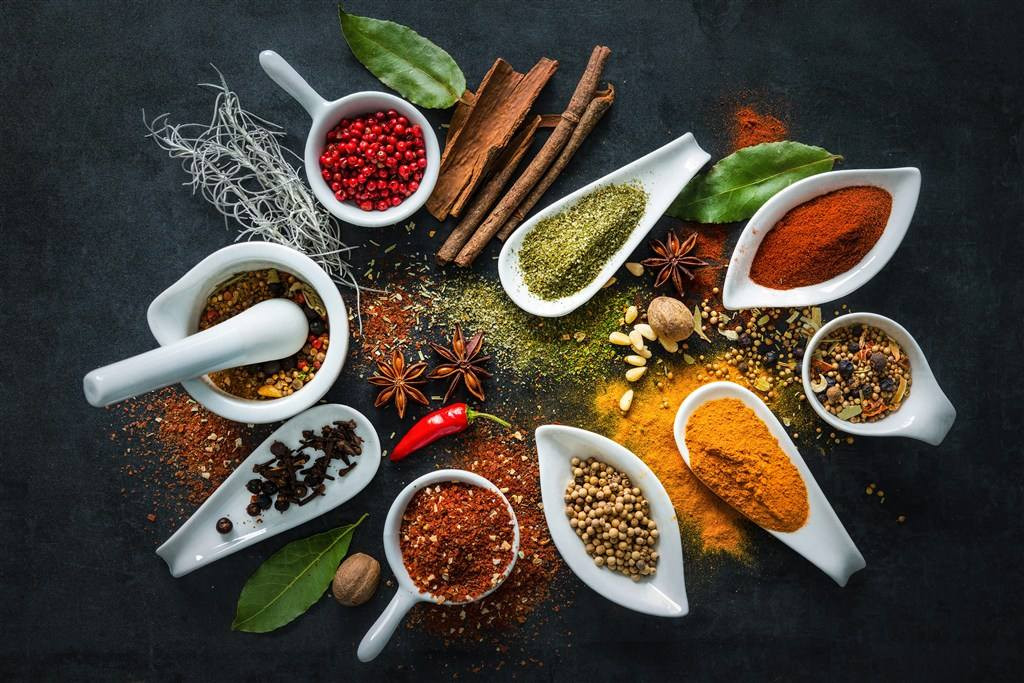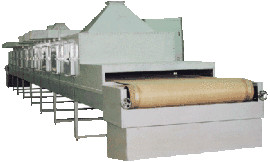Microwave sterilization of smashed spices

YQ2G-03 microwave sterilization equipment with 18 kW power and YQ18S-03 microwave sterilization equipment with 18 kW power for tunnel production were selected to carry out sterilization tests on pepper powder and five spices powder respectively, and the microwave sterilization process for pulverizing spices was established. The results showed that the bactericidal rate of pepper powder with 5% water was over 93% in 4-6 minutes, that of pepper powder with 10% water was over 99% in 4-6 minutes, and that of five spices powder with 5% to 10% water was over 99% in 4-8 minutes at 78 degrees. After microwave sterilization, the total number of bacteria was less than 10000 cfu/g, and no E. coli was detected. The samples of capsicum powder and five spices powder sterilized by 10% water for 6 minutes were stored in a cabinet at room temperature for 10 years. Their sensory properties and tissue state did not change significantly, and the total number of bacteria was low, which met the food hygiene standards.

China is a big country of spicy condiment resources, its variety number and production and sales rank in the forefront of the world, is a major producer and exporter of spicy condiments, spicy condiments play an important role in home food and restaurant cooking. In the past, the bactericidal and bactericidal measures could not keep up, and the bacterium content of chili powder was as high as 8 x105cfu / g. With the improvement of people's living standards, the requirement of food hygiene has been constantly raised. Especially for export, the requirement of imported spices in Japan and other countries is generally less than 5 000 cfu/g of bacteria, and coliform bacteria are negative. Therefore, it is necessary to improve the production quality of deep processed products of Xinxiang seasoning.
In the 1990s, many methods of food sterilization have appeared, such as thermal sterilization, chemical sterilization, irradiation sterilization, microwave sterilization, ultra-high pressure sterilization and so on. International microwave technology began to be applied and studied in food industry in the 1940s. Microwave has thermal effect, non-thermal effect and penetration. Therefore, microwave sterilization has the same effect, the sterilization temperature is lower, the color, flavor and effective ingredients of food can be maintained to the greatest extent without any harmful effects. The material is completely sterilized, safe and reliable, and has a long shelf life. Since the 21st century, microwave sterilization has been applied in many foods in China, and it has achieved better results than traditional sterilization methods. However, seasoning powder is usually treated with irradiation, but irradiation can change the taste of food and is harmful to human body. For smashing spices, microwave sterilization has become the preferred sterilization method for food producers.
Microwave sterilization effect depends on microwave equipment and microwave technology. If microwave equipment is operated on-line with upstream and downstream equipment, it has the advantage of on-line sterilization under normal temperature and pressure, which will be incomparable with other commonly used sterilization methods. At the beginning of the 21st century, microwave equipment began to be developed in food production in China, but few microwave equipment can achieve good bactericidal effect (bactericidal rate over 90%) in condiment food. In 2006, Nanjing Yongqing Food High-tech Development Co., Ltd. successfully developed a tunnel-type microwave sterilization equipment for production and one. Special microwave sterilizing equipment for laboratory. First, we studied the sterilization technology of chilli powder and five spices powder by special microwave sterilization in laboratory, and then tested the microwave sterilization equipment in tunnel production. The results were satisfactory.